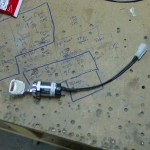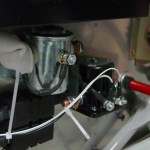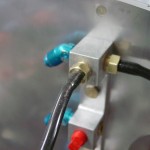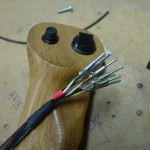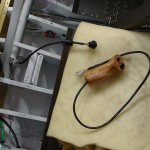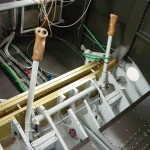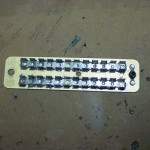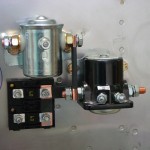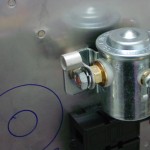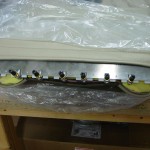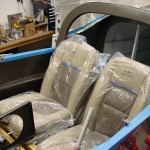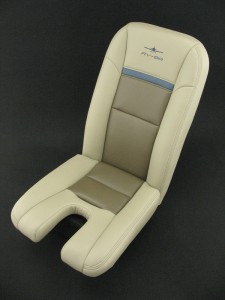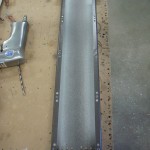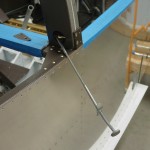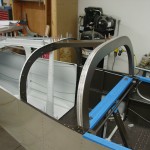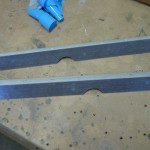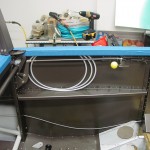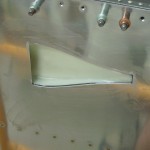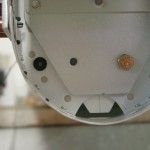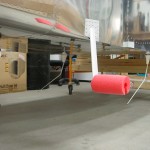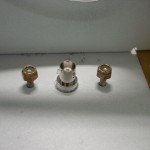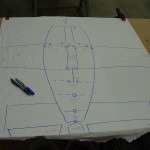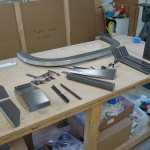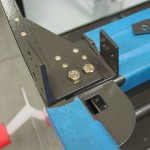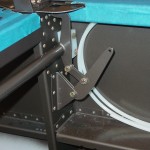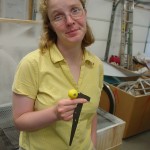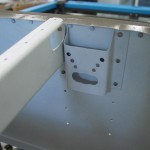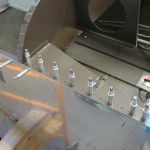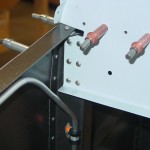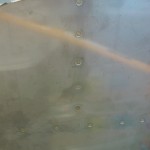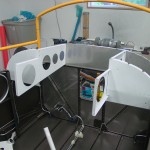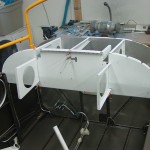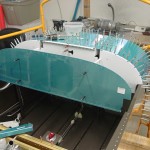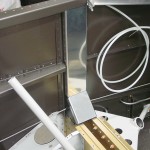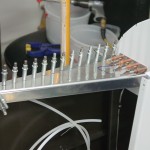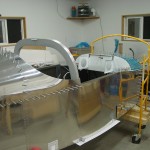Plumbing and wiring
Working on several areas today:
- Installed 1/8″ NPT to barb fitting nipples in the transducer manifold for the manifold pressure line; one will feed MP to the P-Mags, the other to the sensor for the engine monitor screen.
- Fit and temporary-installed silicone tubing from the manifold to the P-mags, and a stub for the MP sensor when it arrives.
- Measured for fuel hoses and pressure sensor lines (fuel, oil, MP) with a piece of tubing. I should now have the list of most of what I need to order, except for the oil cooler hoses, which I won’t be able to measure until baffles and cooler are installed.
- Ran wire from the panel to the wing roots, forward of the main spar, for the fuel level sensors; wires I forgot in the earlier wiring work to those locations.
- Pulled wires to the FWF electrical area, for master contactor, starter engage, and starter engaged annunciator. Terminated and landed the contactor ends, and verified proper operation of the contactors. Secured the wires, at least for now. These should eventually get high-temp tie-wraps.
- Wired the connectors on the stick grips, and glued the grips on with Goop. I’ll have to see how it cures in a few days, whether it’s too soft for this or not. I believe it will be removable with enough force, which would be a positive thing if I ever wanted to change grip function (add a switch, for example) or if a wire needed to be repaired. But, I want it to feel solid, and the grip not to move or flex under normal use.
- Put connectors on the master keyswitch and the aux PTT switches. These connectors aren’t strictly necessary, as the wires could be soldered to them inside the plane, but soldering is a much more pleasant experience when not carried out upside down; I also want to be able to remove the panel without the need to unsolder things, which means a connector on the master switch, since it installs from the front of the panel (unlike the toggles, which install from the back with nuts on the front side.) Installed the aux PTT switches, and glued a tie-wrap base to the underside of the forward canopy decks to secure the PTT wires and static line.
Hours: 7.3 | Posted in Cabin & Interior, Electrical, Plumbing | Comments Off
